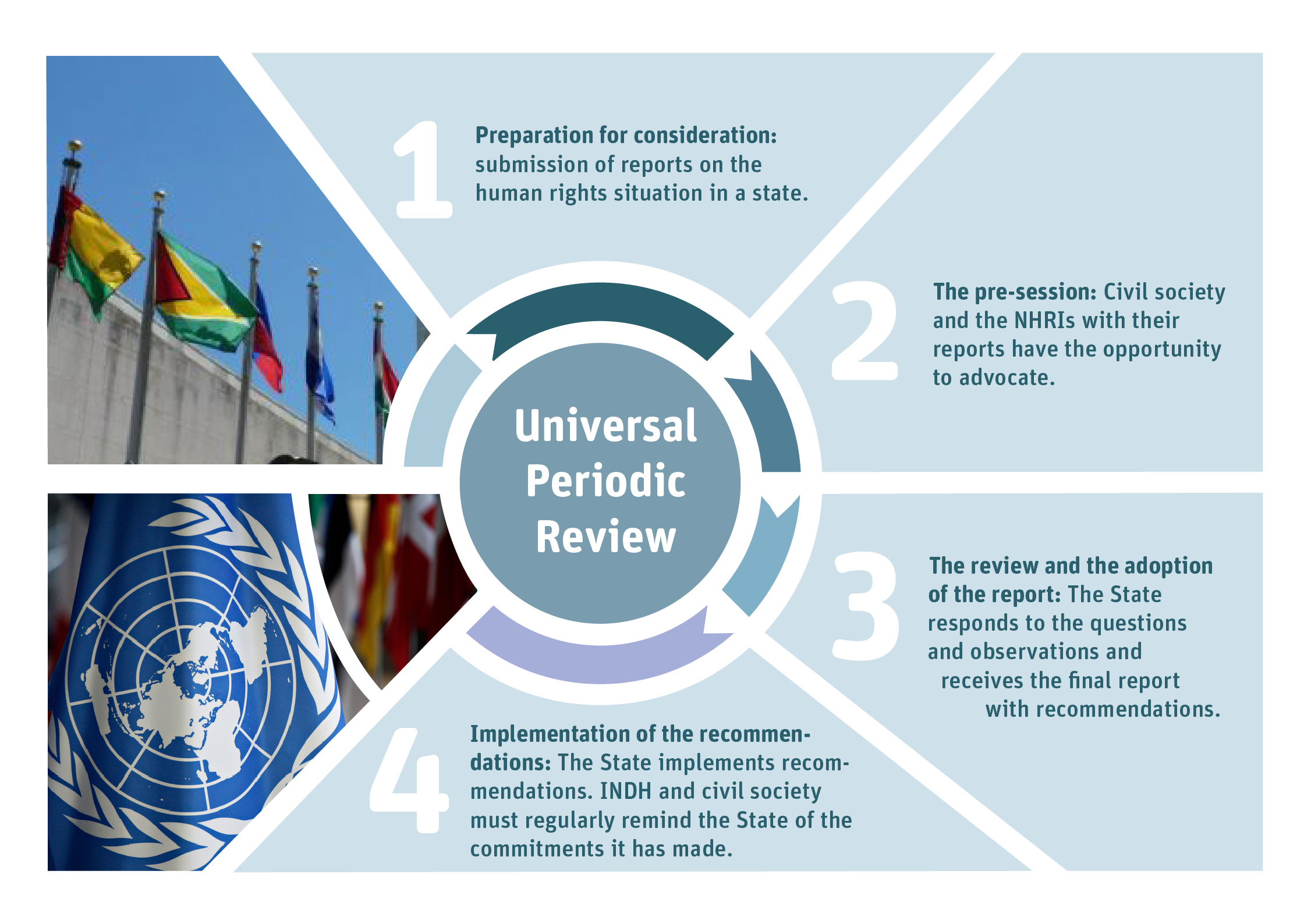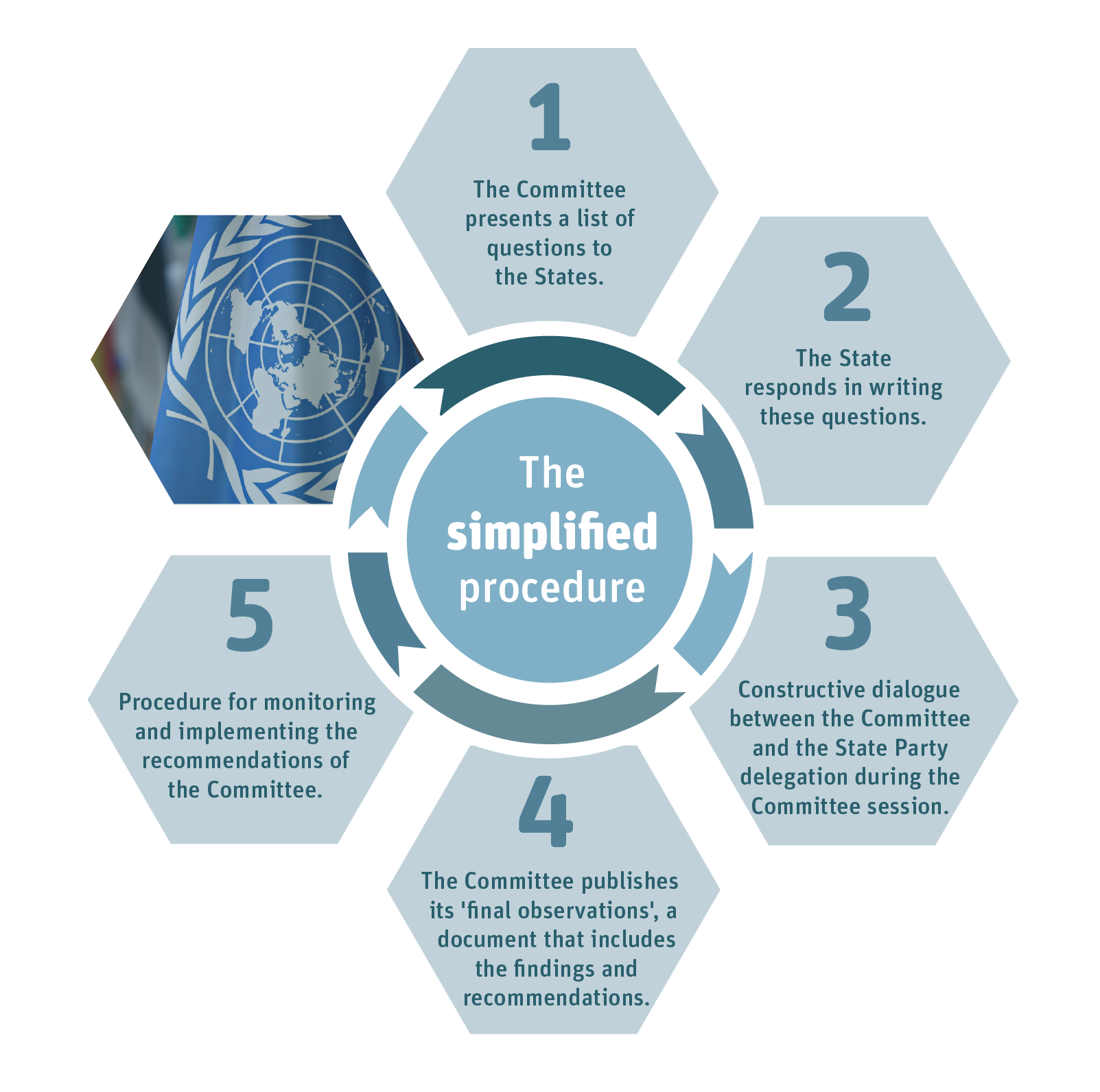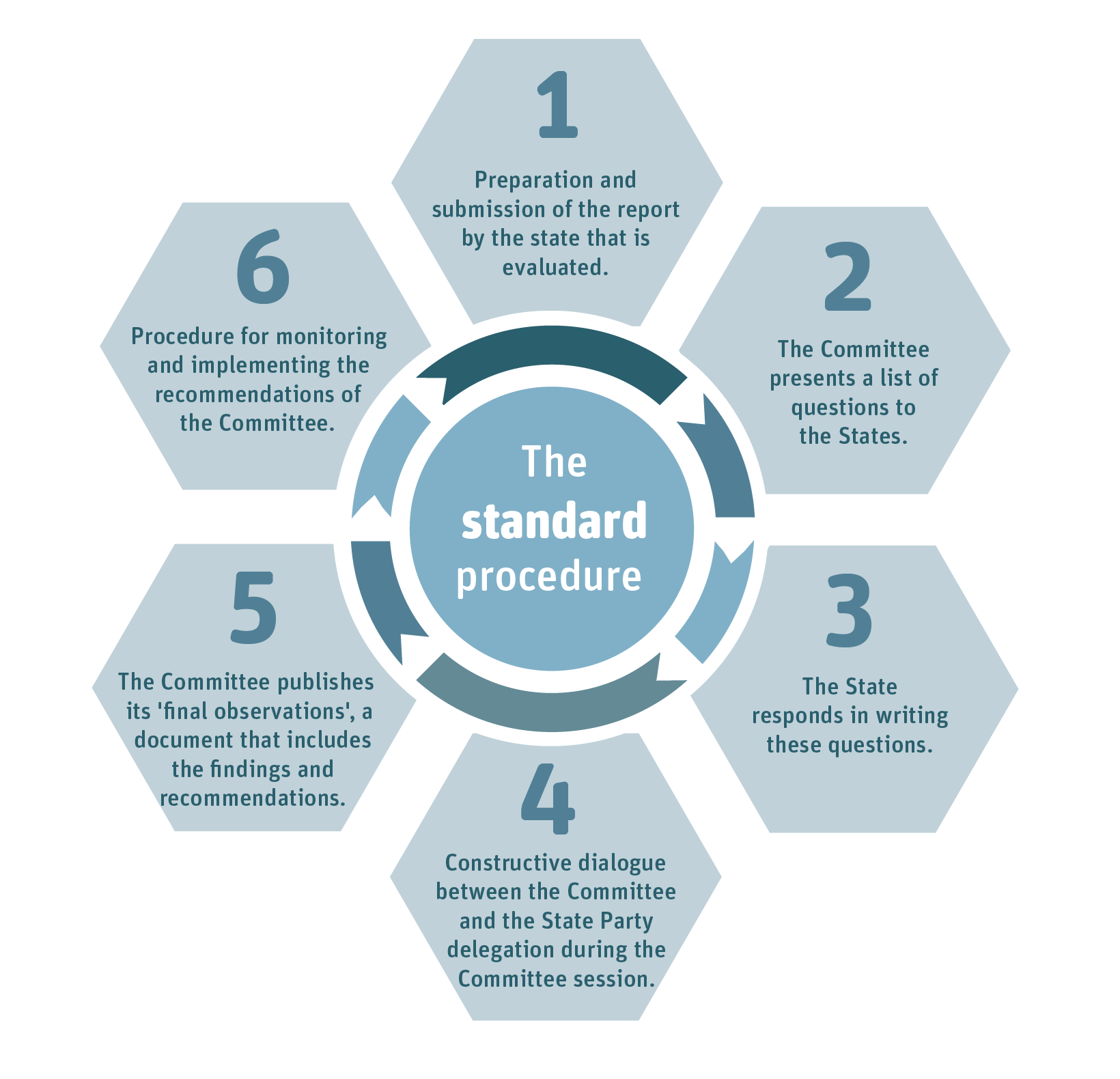The protection of human rights at the United Nations level
The United Nations provides for several mechanisms to ensure respect for human rights in the Member States.
The United Nations Universal Periodic Review (UPR) observes how each State respects and protects human rights. It encourages dialogue between civil society and governments about the human rights situation in each state.
This review is managed by the UPR Working Group. They meet three times a year in Geneva, and 14 states are examined at each session.
How?
Each state is reviewed by the other Member States. These are based on contributions from different actors:
- The state reviewed draws up and defends an inventory of the realisation of the recommendations made at the previous UPR;
- National human rights institutions (Unia for Belgium) file a parallel report (link to the parallel report of Unia in 2020 in French)
- Civil society organisations can send an "alternative" report. These reports are summarised by the Office of the United Nations High Commissioner for Human Rights (OHCHR). You are an NGO and you want to contribute to the review of Belgium? Please go to our "International Report" page.
- The Office of the United Nations High Commissioner for Human Rights (OHCHR) compiles information from various agencies, special procedures and United Nations treaty bodies to draw up an overview of the evolution of human rights in the state reviewed since the previous review.
The steps of the procedure:
- Preparation for consideration: States, United Nations agencies (committees, agencies, special rapporteurs, working groups, etc.) and other stakeholders submit reports on the human rights situation in their state.
- The pre-session: Civil society and the NHRIs with their reports have the opportunity to advocate with States which, during the review of Belgium, could relay their concerns.
- The review: this takes place during a session of the Working Group. The State reviewed presents its national report and responds to the questions and observations of the other Member States. Status A HRIs can briefly speak during this session. Recommendations are made to the State under review, which has the choice to accept or reject them.
- The adoption of the report: Each review is followed by a draft report published one week after the examination. Three or four months later, the final report is adopted.
- Implementation of the recommendations: The State implements recommendations it has accepted. INDH and civil society must regularly remind the State of the commitments it has made.

There are two types of procedures to ensure compliance with different conditions by States: the standard procedure and the simplified procedure.
At every stage of these procedures, civil society and the NHRIs (National Human Rights Institutions) have a role to play. You can find the key dates for each reporting cycle here.
The standard procedure
- Preparation and submission of the report by the state that is evaluated.
- The Committee presents a list of questions to the States
- The State responds in writing these questions. NGOs and NHRIs may transmit their own report to the Committee and contradict or qualify the information provided by the state.
- Constructive dialogue between the Committee and the State Party delegation during the Committee session. NHRIs and civil society organisations can provide information orally, meet the committee and observe dialogue.
- The Committee publishes its 'final observations', a document that includes the findings and recommendations
- Procedure for monitoring and implementing the recommendations of the Committee. The NHRIs and civil society organisations may submit written information on the monitoring procedure and advocate for the implementation of the recommendations by the State.
The simplified procedure
For the simplified procedure, step 1 is removed. The evaluation therefore starts directly with a list of questions, made by the Committee to States.
NHRIs and civil society organisations may submit to the Committee suggested questions to be asked, based on the evaluation of the implementation of the previous recommendations.
The role of civil society organisations and NHRIs remains the same as in the standard procedure for the following phases.
- The Committee presents a list of questions to the States
- The State responds in writing these questions. NGOs and NHRIs may transmit their own report to the Committee and contradict or qualify the information provided by the state.
- Constructive dialogue between the Committee and the State Party delegation during the Committee session. NHRIs and civil society organisations can provide information orally, meet the committee and observe dialogue.
- The Committee publishes its 'final observations', a document that includes the findings and recommendations
- Procedure for monitoring and implementing the recommendations of the Committee. The NHRIs and civil society organisations may submit written information on the monitoring procedure and advocate for the implementation of the recommendations by the State.

The United Nations has several committees, whose competence is based on specific conventions.
These committees observe how the conventions are applied by the Member States that have ratified them.
This verification is via two types of procedures: standard or simplified. The procedures are explained below, and for each committee, the type of procedure used is specified. On our page you will find the important dates and all the steps for each procedure.
Committees |
Reporting Procedure |
Composition |
|
|---|---|---|---|
The CRPD: the Committee on the Rights of Persons with Disabilities |
Body composed of 18 independent experts and experts elected by the Member States for 4 years and who examine the application of the Convention on the Rights of Persons with Disabilities. |
||
The CCPR: the Human Rights Committee |
Body composed of 18 independent experts and experts elected by the Member States for 4 years and examine the implementation of the International Covenant on Civil and Political Rights. |
||
The CESCR: The Committee on Economic, Social and Cultural Rights |
Body composed of 18 independent experts and experts elected by the Member States for 4 years and who examine the implementation of the International Covenant on Economic, Social and Cultural Rights. |
||
The CAT: The Committee against Torture |
Body composed of 10 independent experts and experts elected by the Member States for 4 years and who examine the application of the Convention against Torture and Other Cruel, Inhuman or Degrading Treatment or Punishment. |
||
The CERD: The Committee for the Elimination of Racial Discrimination |
Body composed of 18 independent experts and experts elected by the Member States for 4 years and who examine the implementation of the International Convention on the Elimination of All Forms of Racial Discrimination. |
||
The CRC: the Committee on the Rights of the Child |
Body composed of 18 independent experts and experts elected by the Member States for 4 years and examine the implementation of the Convention on the Rights of Children. |
||
The CEDAW: The Committee for the Elimination of Discrimination against Women |
Body composed of 23 independent experts and experts elected by the Member States for 4 years and who examine the implementation of the Convention on the Elimination of All Forms of Discrimination against Women. |

